Posted on the web site Wellesnet. I’ve added a few illustrations of my own to the original, conducted by Lawrence French.
Having worked as a consultant on the completion of The Other Side of the Wind, I’m no longer sure that all my comments about the film found below would still hold. — J.R.
Jonathan Rosenbaum has long been an astute critic on the cinema of Orson Welles, frequently writing about Welles’ films. He served as the consultant for the re-edited version of TOUCH OF EVIL, and edited THIS IS ORSON WELLES, the seminal book of Welles interviews, conducted by Peter Bogdanovich.
The following interview has been combined from two separate conversations. The first took place in the fall of 1998, after the release of the re-edited version of TOUCH OF EVIL, and focused on the problems inherent in changing TOUCH OF EVIL to what Welles requested in a memo written 41 years earlier. The second interview occurred in January, 2003, and covers Welles’ two
LAWRENCE FRENCH: Does the film museum in Munich now have most of the unfinished Welles films? Read more
From Cineaste, Vol. XXXIII, No. 4, 2008. -– J.R.
1) Has Internet criticism made a significant contribution to film culture? Does it tend to supplement print criticism or can it actually carve out critical terrain that is distinctive from traditional print criticism? Which Internet critics and bloggers do you read on a regular basis?
1) a. Significant and profound. Because the changes it has wrought are ongoing and unfolding, it’s still hard to have a comprehensive fix on them.
1) b. It can and does do both. By broadening the playing field in terms of players, methodologies, audiences, social formations, and outlets, it certainly expands the options. The interactivity of almost immediate feedback, the strengths and limitations of being able to post almost as quickly as one can think (or type), the relative ease of making screen grabs — these and many other aspects of Internet discourse are bringing about changes in content as well as in style and form, shape and size.
1) c. Here’s just a sample: To varying degrees (some much more regularly than others), I like to read Acquarello, David Bordwell, Zach Campbell, Fred Camper, Roger Ebert, Flavia de la Fuente, Filipe Furtado, Michael E. Read more
My 30th “En Movimiento” column for Caiman Cuadernos de Cine, formerly known as the Spanish Cahiers du Cinema, written in late January, 2013. — J.R.
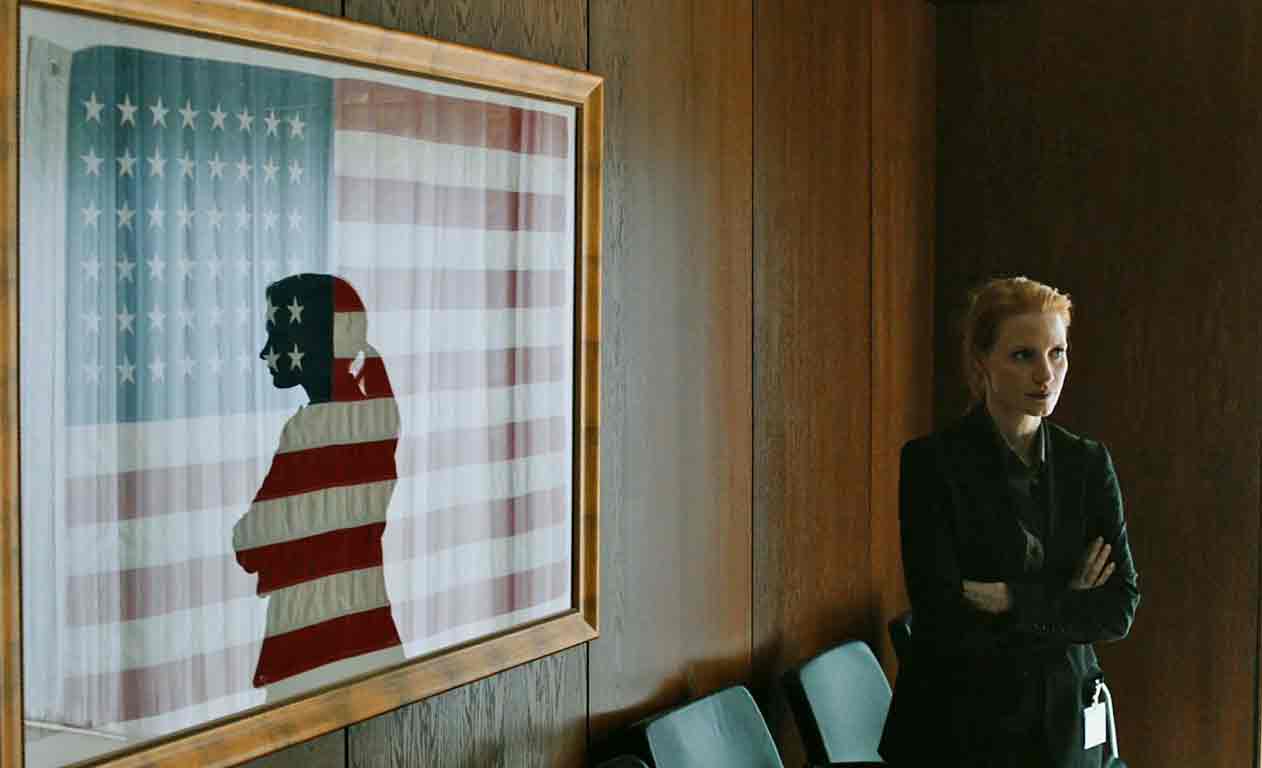
The debates about Kathryn Bigelow and Mark Boal’s Zero Dark Thirty in the United States have been substantial. Critical positions have ranged from Ignatiy Vishnevetsky’s measured defense at mubi.com/notebook/posts to Steve Coll’s attack in The New York Review of Books (to cite two of the less hysterical and more intelligent responses), and have only been exacerbated by the five Academy Award nominations the film has received. When I finally saw the film myself, it was apparent that part of the controversy derived from a certain ambiguity in the film’s depiction of torture, made all the more ambiguous by the filmmakers’ misleading and mainly unconvincing claims of political neutrality — a battle still being waged in the February issue of Sight and Sound, where Nick James, the editor of that English monthly, begs to differ with the negative judgments of two of his writers towards the film, even though he concedes that Bigelow’s naïve contention that “The film doesn’t have an agenda, and it doesn’t judge” has only helped to confuse matters.I agree with James that the climactic killing of Osama bin Laden registers largely as a hollow and morally dubious victory, but I also believe that the film’s commercially motivated attempt to be circumspect about its overall critical position makes it easy to misinterpret. Read more
From the October 9, 1987 Chicago Reader. — J.R.


Louis Feuillade’s extraordinary ten-part silent serial of 1916, running just under eight hours, is one of the supreme delights of film–an account of the exploits of an all-powerful group of criminals called the Vampire Gang, headed by the infamous Irma Vep (Musidora), whose name is incidentally an anagram for “vampire.” Filmed mainly in Paris locations, Feuillade’s masterpiece combines documentary with fantasy to create a dense world of multiple disguises, secret passageways, poison rings, and evil master plots that assumes an awesome cumulative power: the everyday world of the French bourgeoisie, personified by the hapless sleuth hero, during the height of World War I is imbued with an unseen terror that no amount of virtuous detection can ever efface entirely. (Significantly, as in many of Feuillade’s other serials, the villains are a good deal more fascinating than the relatively square hero, although a comic undertaker and the leader of a rival gang are periodically on hand to help him out.) Because none of Feuillade’s complete serials is available in the U.S., this special screening helps to fill an enormous gap in our sense of film history. One of the most prolific directors who ever lived, Feuillade is today arguably a good deal more entertaining than Griffith, and unquestionably much more modern: his mastery of deep-focus mise en scene is astonishing, and its influence on Fritz Lang as well as Luis Bunuel and other Surrealists remains one of his major legacies. Read more
From the Chicago Reader (October, 1990). — J.R.
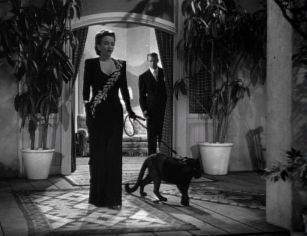


This economically constructed and haunting chiller (1943, 66 min.) from the inspired team of producer Val Lewton and director Jacques Tourneur doesn’t have the reputation of the two other films they worked on together in the early 40s, Cat People and I Walked With a Zombie. In part that’s because its ending is a bit abrupt and unsatisfactory — but it’s still one of the most remarkable B films ever to have come out of Hollywood. Adapted from Cornell Woolrich’s novel Black Alibi by Ardel Wray and Edward Dein, the film employs an audacious narrative of shifting centers, thematically related by a string of grisly murders in a small town in New Mexico. Depending for much of its effect on a subtle and poetic nudging of the spectator’s imagination, the film has a couple of sequences that are truly terrifying. With Dennis O’Keefe, Margo, and Jean Brooks. (JR)
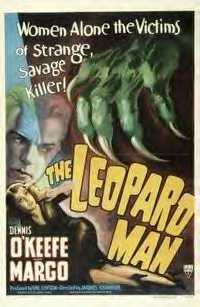 Read more
Read more
From Cinemad No. 3 (2000). Much of this piece makes me blush, and other parts are clearly out of date, but I’m posting this basically “for the record”. -– J.R.
A conversation with film critic Jonathan Rosenbaum by Paolo Ziemba
This being the first article that I’ve written for Cinemad I thought it was more than appropriate to delve into a time where films changed my way of thinking of the world. Rosenbaum was key in this new beginning. Cinemad continues this process. While reading Rosenbaum’s books for research I experienced a sort of nostalgia for the days back when I was broadening my knowledge of cinema. Rosenbaum had opened many doors to a world of cinema that I had never experienced before. With this in mind I would like this article, at the least, to stir the readers to explore what Rosenbaum, and the world of cinema, is more than willing to offer.
Imagine a film critic who travels the world and experiences all cinema. Imagine a critic who is not only moved by cinema because of its beauty, but also because of its importance in the world. Imagine a critic who takes all of this in and then serves it to anyone willing to read. Read more
From Film Comment (July-August 1977). After I returned to the U.S. early that year after seven and a half years of living in Europe (Paris and London), my “Paris Journal” and “London Journal” column in Film Comment became “Moving,” a preoccupation that eventually yielded the title of my first book, Moving Places.
Note: the 35 mm screening of JEANNE DIELMAN alluded to here was set up by Manny Farber and Patricia Patterson on the University of California, San Diego campus while they were working on the last of their essays. -– J.R.
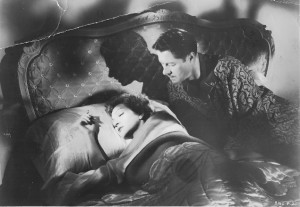
How to keep moving in the same way that this column must travel — from La Jolla, to Richard Corliss in Cannes, to Film Comment in New York, to wherever you happen to be reading it? Now that TV Guide generally has to take the place of Pariscope, [London’s] Time Out, the New York newspapers, shall I write about the breathneck beginning of Sirk’s SLEEP, MY LOVE, the parallels with Preminger’s WHIRLPOOL,a wonderful exchange between Don Ameche and Hazel Brooks (”Doesn’t sound like my girl…” “You have a lot of girls. This is one of them”), or scenes that unexpectedly and mysteriously take place in the rain? Read more
Written in 2013 for a 2019 Taschen publication. — J.R.
PlayTime

1. The Title
First of all, what is the title? Like most other critics, I’ve generally known and written it as Playtime, but the final draft of the screenplay in late 1964 called it only Film Tati No. 4. Other early and tentative titles included Récreation (Recess) and La grande ville (The Big City). In 1979, based on the credits sequence and ad logos, film academic Kristin Thompson wrote that the correct title was Play Time. But according to this volume’s editor, “Tati himself referred to it in correspondence always in capitals and always (at least from what I’ve seen) as one word,” i.e. as “PLAYTIME”. And “Macha Makeieff, as the rights holder to the Tati estate, took an official decision a few years back that the official spelling is now to be ‘PlayTime,’ i.e. in one word but with a capital ‘T’.”
Do such distinctions matter? I think they do. American historian Rick Perlstein has called “Play Time “a sentence, not a word, and a command,” adding that one can even “read it as two verbs, a double command.” But what arguably makes “PlayTime” better than either “Playtime” or “Play Time” is its emphasizing the fact that it isn’t either a French or an English title. Read more
Written in 2013 for an expensive book on Jacques Tati prepared for Taschen by Alison Castle. — J.R.
Jour de fête


1. A Parisian Discovers the Countryside

In 1943, Jacques Tati, age 34, was living in occupied France. He had played rugby, become a successful music hall performer, and acted in a few short comic films. That year he left Paris with a screenwriter friend named Henri Marquet in search of the remotest part of the country they could find, hoping to escape recruitment as workers in Germany. They finally settled on a farm near Sainte-Sévère-sur-Indre, located in the dead center of France — not far from where George Sand had entertained such house guests as Chopin, Liszt, Flaubert, and Turgenev — and spent a year or so getting acquainted with the village and its inhabitants.


Two years after Germany’s surrender, Tati and Marquet returned to the village to make a short film, L’école des facteurs (“The School for Postmen”), in which Tati played François, the village postman, who delivers the mail on a bicycle. François was based loosely on a bit character — a befuddled postman, played by another actor — in Soigne ton gauche (1936), a comic short Tati had written and starred in. Read more
From Time Out (London), October 1, 1976. As I point out in my first collection, Placing Movies (1995), my flip comparison of moviegoing and sex in the latter part of this article led Robin Wood in the Times Educational Supplement (22 October 1976) to virtually link me with the downfall of Western civilization: “The implicit trivialization of art and life is the ultimate stage in our alienation.” This was some time before he declared Celine and Julie Go Boating a masterpiece on his own terms, bringing in a feminist perspective that my own appreciation sorely lacked.–- J.R.


The Plot Thickens
I’ve said it before and I’ll say it again: Jacques Rivette is the most important director working in the narrative cinema today. And Celine and Julie Go Boating, while it may not be his most important achievement, is by commonconsent the most enjoyable and accessible of all his movies to date It is also the first of his films to open commercially in England In over a decade. The two movies he has made since, Duelle and Noroît, will both be shown at this year’s London Film Festival — along with Sérail, the first feature by Eduardo de Gregorio, Rivette’s scriptwriter.
Considering the fact that all of Rivette’s most exciting and innovatory work has been made over the past ten years, one might well ask why it has taken so long for any of this work to be released here. Read more
Written for the 99th issue of Trafic (Fall 2016) — a revision and slight expansion of two previous essays. — J.R.




The rapidly and constantly expanding proliferation of films and videos about cinema is altering some of our notions about film history in at least two significant ways. For one thing, now that it has become impossible for any individual to keep abreast of all this work, our methodologies for assessing it as a whole have to be expanded and further developed. And secondly, insofar as one way of defining work in cinematic form and style that is truly groundbreaking is to single out work that defines new areas of content, the search for such work is one of the methodologies that might be most useful. In my case, this is a search that has led to considerations of two recent videos by Mark Rappaport: I, Dalio — or The Rules of the Game (2014, 33 minutes), and Debra Paget, For Example (2016, 37 minutes). Both are highly personal works that also define relatively new areas of on-film film analysis, forms of classification that can be described here as indexing.
Rappaport was born in New York and he lived and (mostly) worked there until he moved to Paris in 2005, although his work with found footage started over a decade earlier with Rock Hudson’s Home Movies (1992), followed by Exterior Night (made in Germany for German television in 1993), From the Journals of Jean Seberg (1995), The Silver Screen: Color Me Lavender (1997), and his 2002 short John Garfield. Read more
The following was written to accompany a film series put together by Ehsan Khoshbakht, Imogen Sara Smith, and myself for a tour in Turkey in late 2018 sponsored by the American Embassy. I don’t know if it was used in this form. — J.R.



“Fake news”, the term paradoxically used by Donald Trump for journalism that exposes his own lies and corruption, evokes what George Orwell called New-speak in 1984, whose slogans included “war is peace” and “ignorance is strength”. Trump’s cleverness as a media manipulator consists of appropriating the very term that describes his own practice while reversing its meaning so that his opponents — including the people who put together this film program about “fake news,” my colleagues and myself — can no longer use it without speaking on Trump’s behalf. This is surely manipulation with a vengeance, where control over both language and presence becomes another form of class inequality. So when TV executives remark that Trump is bad for America but good for television, they’re only suggesting that these two latter entities have separate agendas and even separate owners, neither of which happens to be the American public.


Feeding public fears with worst-case scenarios is the principal form of press manipulation found in Try and Get Me! Read more
From the Chicago Reader (March 1, 2002). — J.R.

Seeing this 1968 masterpiece in 70-millimeter, digitally restored and with remastered sound, provides an ideal opportunity to rediscover this mind-blowing myth of origin as it was meant to be seen and heard, an experience no video setup, no matter how elaborate, could ever begin to approach. The film remains threatening to contemporary studiothink in many important ways: Its special effects are used so seamlessly as part of an overall artistic strategy that, as critic Annette Michelson has pointed out, they don’t even register as such. Dialogue plays a minimal role, yet the plot encompasses the history of mankind (a province of SF visionary Olaf Stapledon, who inspired Kubrick’s cowriter, Arthur C. Clarke). And, like its flagrantly underrated companion piece, A.I. Artificial Intelligence, it meditates at length on the complex relationship between humanity and technology — not only the human qualities that we ascribe to machines but also the programming we knowingly or unknowingly submit to. The film’s projections of the cold war and antiquated product placements may look quaint now, but the poetry is as hard-edged and full of wonder as ever. 139 min. (JR)
 Read more
Read more
From the Chicago Reader (October 1, 1994). — J.R.


Roman Polanski’s second British film (Repulsion was the first) is a mean little absurdist comedy (1966) set on a remote Northumberland island; it’s also one of the best and purest of all his works. An odd couple (Donald Pleasence and Françoise Dorleac) living in an isolated castle find their world invaded by two doomed gangsters on the run (Lionel Stander and Jack MacGowran), and the ensuing standoffs are funny, cruel, disquieting, and unpredictable, especially after various other unwelcome guests turn up. Stander is especially good — this may be the definitive performance of the blacklisted gravel-voiced character actor, best known for his 30s and 40s work. With Robert Dorning and Iain Quarrier; watch for Jacqueline Bisset as one of the guests. 111 min. (JR)

Read more
From the Chicago Reader (June 28, 2002). — J.R.
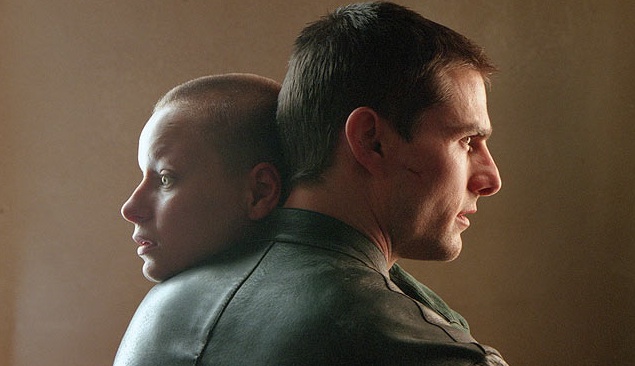
Minority Report *** (A must-see)
Directed by Steven Spielberg
Written by Scott Frank and Jon Cohen
With Tom Cruise, Colin Farrell, Samantha Morton, Max von Sydow, Lois Smith, Peter Stormare, Tim Blake Nelson, Steve Harris, and Kathryn Morris.
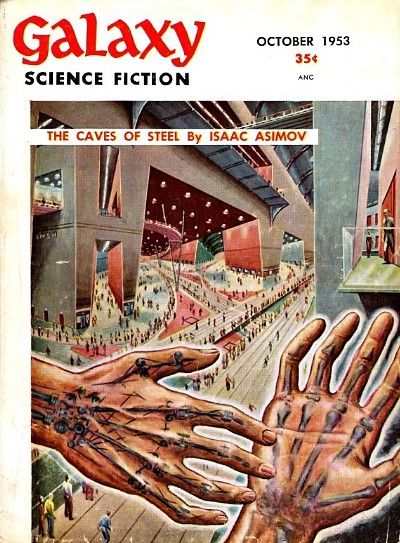
Since my early teens I’ve been stubbornly clinging to a copy of the October 1953 issue of Galaxy Science Fiction magazine, featuring the first installment of Isaac Asimov’s The Caves of Steel, a mystery story set in a vast city of the future. I prize this particular issue not for anything inside but for the cover illustration by “Emsh,” the name future filmmaker Ed Emshwiller used to sign his artwork. In the foreground two transparent hands — one revealing human bones, the other metal ones — are shown in front of the vast reaches of an enclosed cityscape with pedestrians. This encouraged me to consider not only a future city but also how it might look to both a human and a robot detective.
No story, by Asimov or anyone else, could do as much for my imagination as that Emsh cover. The only thing that came close was a single sentence by Damon Knight in his review of Asimov’s novel, which may have been what led me to the novel and that issue of Galaxy in the first place: “Asimov has turned a clear, ironic, and compassionate eye on every cranny of the City: the games children play on the moving streets; the legends that have grown up about deserted corridors; the customs and taboos in Section kitchens and men’s rooms; the very feel, smell, and texture of those steel caves in which men live and die.” Read more



























